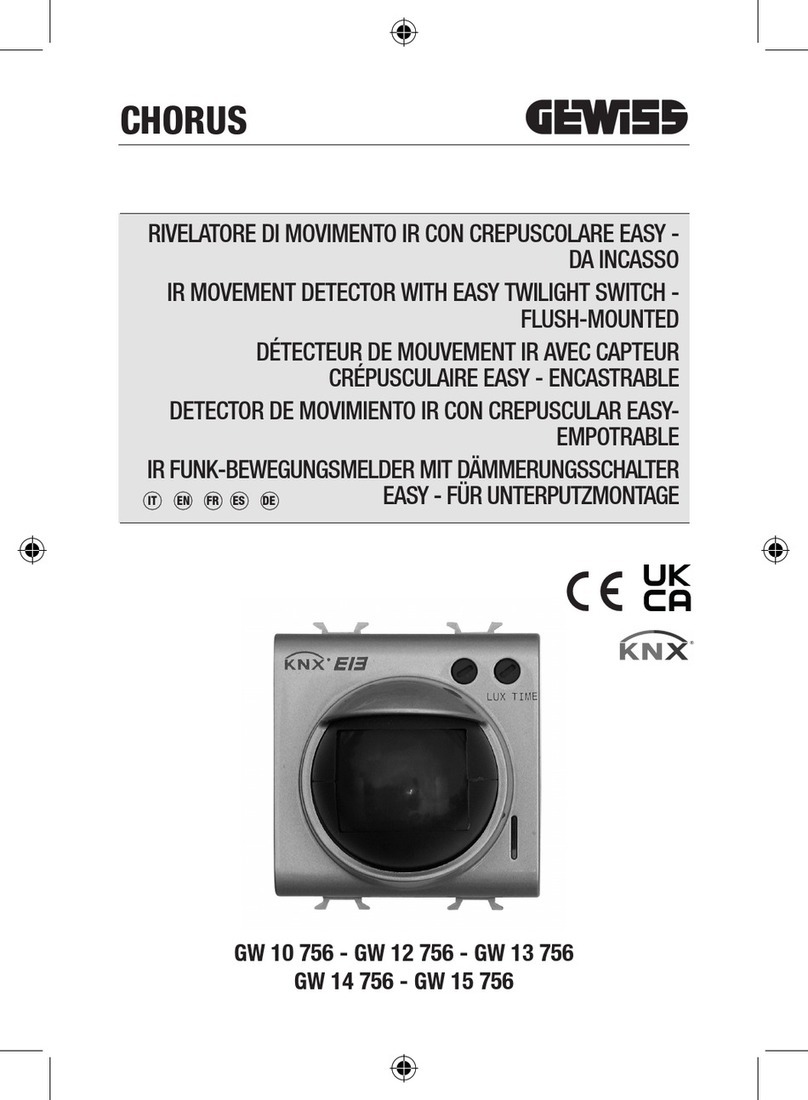
Recovery time
Cycle time
Movement start Movement end
Cycle time Cycle time
Movement start Movement endMovement start
Recovery time
Recovery
time
Recovery
time
Diag. 3.2
The first diagram illustrates the condition where, within the cycle time, a time equal to the recovery time
lapses without the device detecting any movement; the cycle time therefore commences when the first
movement is detected, indicated by a bold font arrow; at the same time a movement start telegram is also
sent (if the send telegram option is enabled); if no further movement is detected within the cycle time, the
recovery time counter is reset, indicated by a styled font arrow. In this case, the recovery time count is
completed because no movement has reset the counter value, and the end of the movement is confirmed by
the sending of a movement end telegram (if this option is enabled) and the end of the cycle time count. Once
the recovery time has expired, the detection of movement triggers the above illustrated cycle once again.
The second diagram replicates the complete operating condition, that is when more than one cycle time
lapses before the movement end command is given.
When the device detects the first movement, indicated by a bold text arrow, this triggers the start of the cycle
time counter and the sending of the movement start telegram (if this telegram is enabled); when no more
movement is detected, the recovery time counter starts which is not terminated when a new movement is
detected. This situation reoccurs again until the cycle time expire (second bold arrow); at this point, if the
cyclic command option is enabled, the movement start telegram is sent once again and the cycle time
counter is reset. This time however, a time equal to the recovery time lapses, within the cycle time, without
any movement detection and this condition triggers the movement end command (last bold arrow), and the
movement end telegram is sent, and the cycle time count ends. The detection of movement triggers the
above illustrated cycle once again.
3.1 Parameters
¾3.1.1 Format selection
This determines the format to be set for the recovery time.
According to the value set for this item, the Minutes and seconds options will be displayed.
The settings are:
•seconds
On using this value the recovery time format will be in seconds, so the maximum value will be 59
seconds. With this setting, the Seconds option is available.
•minutes, seconds
On using this value the recovery time format will be in minutes and seconds, so the maximum value will
be 59 minutes and 59 seconds and the minimum value 1 minute. With this setting, the Minutes and
Seconds options is available.
6

































